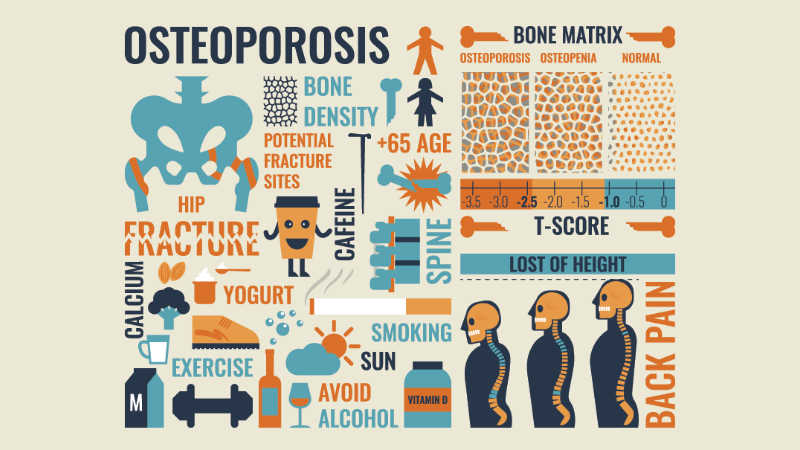When it comes to osteoporosis, milk does not always do a body good.
That is the news from a Harvard University study that followed more than 77,000 women for more than a decade. Researchers found no reduction in the risk of an arm or hip fractures in women who drank three glasses of milk daily.
As an orthopedic surgeon who practices at Adventist Health Simi Valley, I hear it from patients frequently: “I can’t have osteoporosis. I drink plenty of milk.” It is one of the greatest perpetuated myths when it comes to bone health.
Osteoporosis is a painful and devastating disease caused by calcium deficiency and aging, that leaves bones more porous and fragile, increasing the risk of fractures.
Nearly 33% of women and about 20% of men over the age of 50 will suffer an osteoporotic fracture annually, according to the International Osteoporosis Foundation. Women are at higher risk due to natural hormonal changes that take place throughout their life cycle.
Oftentimes, we can make simple lifestyle changes to improve our bone health. It is easier to prevent osteoporosis than to treat it. But first, we need to understand the primary functions of our bones. They, of course, provide support and protect our organs; but they also store essential minerals, including calcium. It is calcium that makes it possible for our heart to beat, our muscles to contract, and our nerves to conduct impulse. When we do not have enough calcium, our body pulls from those stockpiles in our bones. That is okay occasionally, but it can lead to osteoporosis when it happens frequently.
Osteoporosis is often thought of as a geriatric disease. It is not. It can affect people of all ages, and women are twice as likely to develop the disease as men.
The risks are devastating.
Roughly 20% of all those who break a hip die within the same year. More than half of those who develop osteoporosis in old age lose their independence and must enter a skilled nursing facility.
So how do we prevent it?
The key is keeping calcium in our bones. Mineral loss in bones comes from a combination of genetics, diet and lifestyle factors. In general, to retain calcium, it’s best to avoid salt, caffeine and tobacco, while increasing physical activity and exposure to the sun.
Another thing to avoid? High animal protein diets.
Diets high in animal proteins, including eggs, lead to a greater excretion of calcium in our urine. As a result, there’s a strong correlation between animal protein diets and fracture rates internationally.
Meanwhile, eliminating animal proteins from our diet cuts calcium losses in half, according to a report in the American Journal of Clinical Nutrition.
So, just changing our diet to incorporate more fruits and vegetables could be part of the answer to decreasing our osteoporosis risk. Try eating broccoli, Brussels sprouts, collards, kale, mustard, and greens that are loaded with absorbable calcium.
Combining a healthy diet with exercise can be a powerful tool in decreasing risk. Walking, jogging, hiking, and climbing stairs help keep our bones strong, as does strength training with weights.
We know some people gripe about eating vegetables, but dietary calcium has not been associated with any elevated risk of heart attacks.
As for the milk? Drink up – but it is not going to prevent brittle bones.
Dr. Harpreet Bawa is a fellowship-trained joint replacement surgeon with the Southern California Orthopedic Institute who specializes in knee and hip replacements. He practices at Adventist Health Simi Valley.
Sidebar:
Tips to Prevent Osteoporosis
Increase:
- Exercise
- Exposure to sun
- Fruits and vegetables
Avoid:
- Salt
- Caffeine
- Tobacco
- Diets high in animal fats





